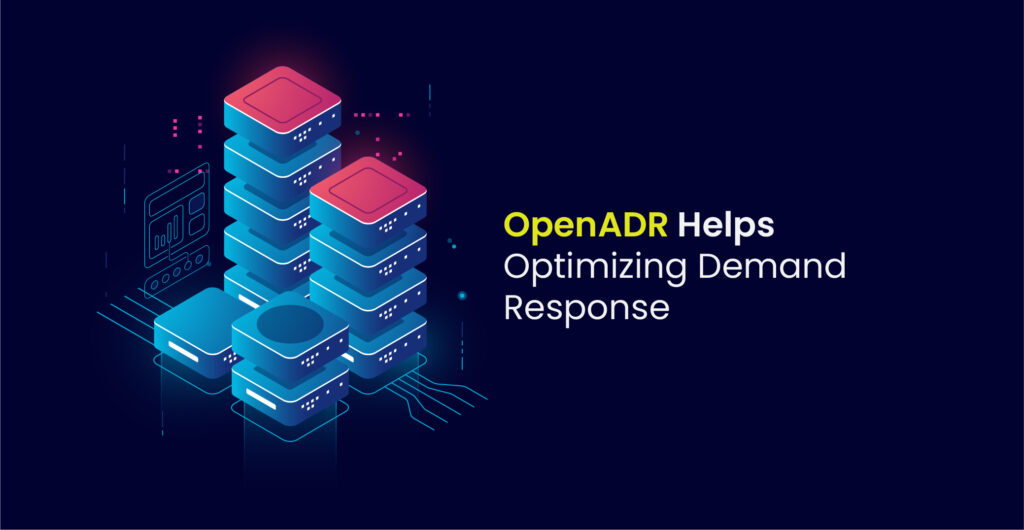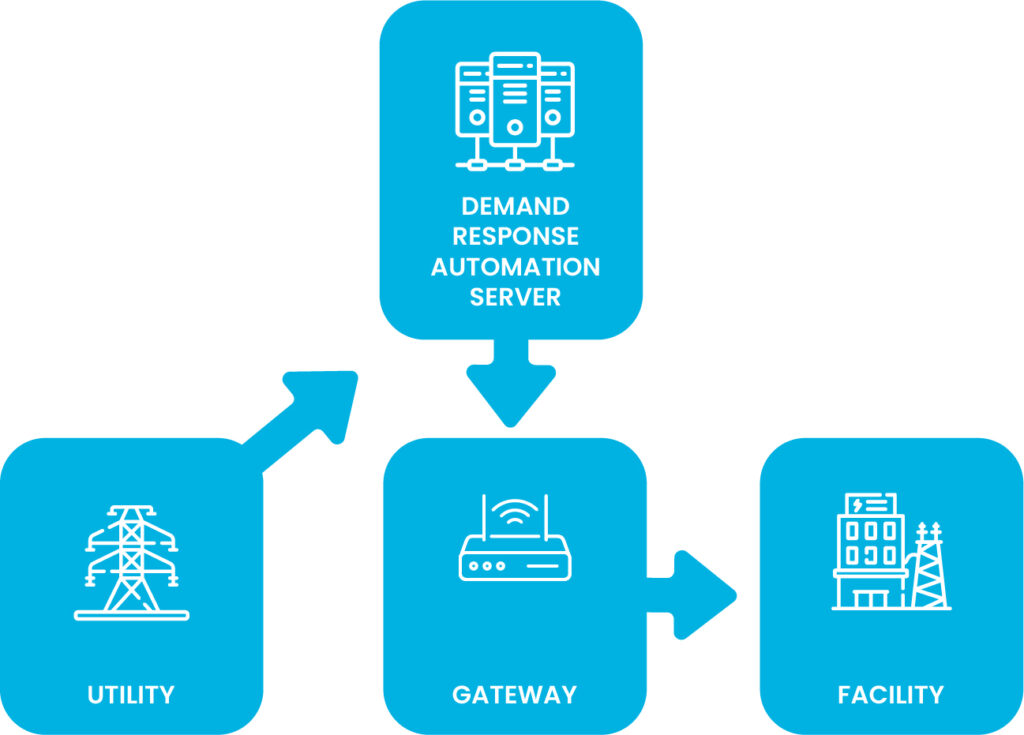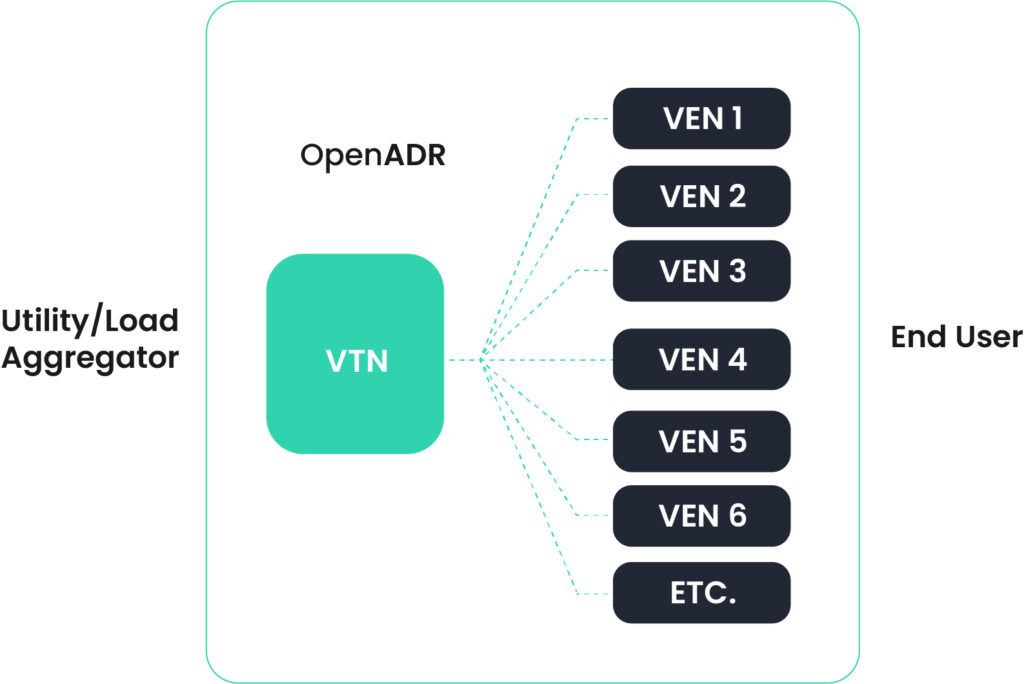How OpenADR take the demand response to the next level?

From the previous blog, we have learned that demand response programs enable consumers to voluntarily trim electricity during peak hours or choose to use electricity at a less congested time. Demand response can be implemented manually, fully automatically or something in between. Automated Demand Response (ADR) is mostly used to accommodate the increased demand for energy efficiency. ADR is gaining rapidly getting popularity and OpenADR alliance is developing a global standard for automating demand response programs for utilities and businesses. This article explains how OpenADR makes a significant impact in commercial and industrial energy management.
Here are the key areas we discuss:
- Open Automated Demand Response
- How does OpenADR work?
- OpenADR 1.0 Vs OpenADR 2.0
- Why OpenADR?
- Eligible DR Programs for OpenADR communications
- How do Lumos Controls implement OpenADR?
Open Automated Demand Response
Automated demand response is an internet protocol used to communicate with equipment at end users’ facilities to automatically drop demand (electrical load) during demand response events.
To simply put, server-side represents utilities, and the client side represents end device owners or operators. Examples of end devices could be:
- Thermostats
- Water Heaters
- EV Chargers
- Solar / Storage / Inverters
- Lighting Controls Systems
- Building Management Systems
- Industrial Controls Systems
With automation, you can preset when and how often you want to reduce your electricity demand. Built on a client-server architecture (virtual end node, or VEN)/ (virtual top node, or VTN) ), OpenADR is conceived as an open specification so that any facility can implement it. OpenADR specification facilitates flexible action based on a DR signal without manual intervention.

How does OpenADR work?
OpenADR is all about the communication between the utility and the end devices
Two key components of OpenADR are:
Virtual Top Node – VTN is the server residing on the load aggregator/utility side and schedules the events
Virtual End Node – VEN is the client working on the device side and receives the communication from the VTN. VEN’s are configured to respond to the server with any relevant information, such as device participation details, opt-outs, reporting and more.
Examples of messages conveyed via OpenADR from VTN to VEN include:
- PRICE_ABSOLUTE – The price per kilowatt‐hour
- PRICE_RELATIVE – A change in the price per kilowatt‐hour
- PRICE_MULTIPLE – A multiple of a basic rate per kilowatt‐hour
- LOAD_AMOUNT – A fixed amount of load to shed or shift
- LOAD_PERCENTAGE – The percentage of load to shed or shift
One VTN connects with many VENs, and each VEN only connects to one VTN.

This is how an openADR is set up and connected to end devices.
OpenADR communication consists of:
- Events: VTN notifies about upcoming load shifting requirements and market conditions
- Registration: register your VEN to a VTN
- Opts: VEN communicates whether it will be participating in a given event
- Reports: VEN communicates reporting
OpenADR 1.0 Vs OpenADR 2.0
OpenADR 1.0 was created to give a technical framework and validate the concept of automated communication of price and reliability signals from utilities to end users.
Using the Open ADR 1.0 technical framework, OpenADR 2.0 builds a standardized testing and certification process to support growing energy demand.
Let’s look at the key difference between the two versions:
| OpenADR 1.0 | OpenADR 2.0 |
| Number of members is limited | Rapidly growing ecosystem for vendors |
| There is no certification program | Test tool, test plan & certification |
| Focusing only local DR programs | Flexible and open to most DR programs |
| Not a national or international standard | Based on OASIS standard |
| Doesn’t include test tool and harness for implementers | Advanced architecture for pricing, telemetry, and other services |
Why OpenADR?
The OpenADR standards offer the following potential benefits:
- Universal open standards: Provides a standardized DR communication and signaling infrastructure using open, non-proprietary, industry-approved data models
- Mitigate peak pricing period: OpenADR based system will help commercial and industrial customers to benefit from the ability to mitigate the impact of Critical Peak Pricing (CPP) events.
- Maximize utility incentives: Customers will get enhanced incentives for installing fully automated demand response system.
- Increased grid reliability: OpenADR-based DR capacity is a more predictable DR resource for Utilities & Energy Service providers to use during grid stress.
- Greater flexibility: OpenADR can work with a wide range of products, ranging from simple products to sophisticated commercial energy management systems.
Eligible DR programs for OpenADR communications
Commercial and Industrial
- Critical Peak Pricing (CPP)- an electricity demand response technology to lower electricity cost by reducing usage during peak times.
- Capacity Bidding Program (CBP) – enables organizations to earn revenue by lowering electricity usage a few times yearly when the grid is stressed.
- Base Interruptible Program (BIP) – the program pays you to drop your electricity usage to a predetermined level when energy supplies are limited.
- Real Time Pricing (RTP) – Also known as dynamic pricing, RTP is a utility rate structure in which the per-kWh charge varies each hour based on the utility’s real-time production costs.
Residential
- Smart Energy Program (SEP) – use Wi-Fi connected smart thermostats to reduce air conditioning load in residential facilities during peak hours.
- Critical Peak Pricing (CPP) – an electricity demand response technology to lower electricity cost by reducing usage during peak times.
How do Lumos Controls implement OpenADR?
Lumos Controls achieves this capability by integrating with an OpenADR gateway certified by the OpenADR alliance. Lumos Controls can invoke a scene, send an email or notify based on various OpenADR events in the programs that the user has subscribed to. Learn more

In a nutshell
OpenADR is an important part of demand response, and utility companies and commercial industries worldwide are working together to foster the adoption and development of the Open Automated Demand Response standard through collaboration, education, training, testing, and certification.
So, dig into some research, or you can even talk to our experts. Then, see what your business can be.